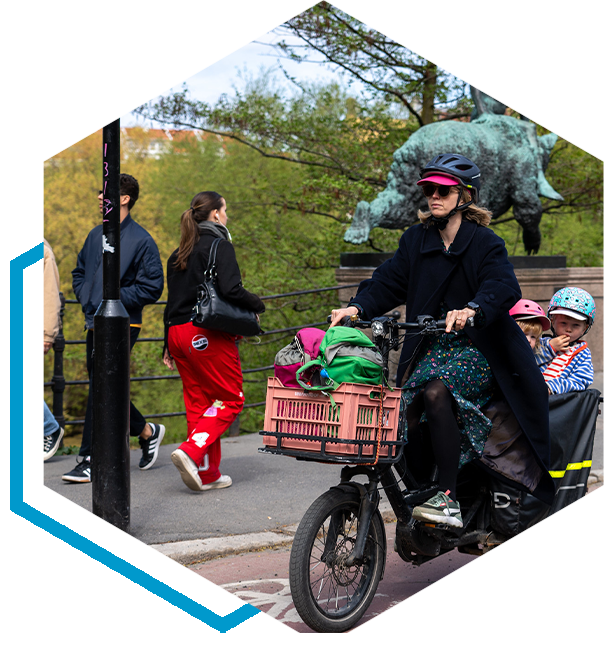The Climate Budget
"Mainstreaming climate budgeting"

Other Contributors
City Administration of Oslo, notably the Department of Finance and the Department of Environment and Transport
Location
Oslo, Norway
THE PROBLEM
Oslo faces increased climate threats including heavy rainfall and flooding, drought and heat waves. Globally, cities contribute up to 80% of greenhouse emissions across a complex array of sectors, industries and sources.
The Big Idea
Pioneering a first-of-its-kind climate budgeting project that integrates greenhouse gas emissions tracking and reduction into the yearly municipal budget cycle.
Life Changing Impact
Enables cross-sectoral actions to achieve reductions in emissions during a period of population growth, with cascading benefits in quality of life, climate resilience and people’s wellbeing.
Ripple Effect
The project and its innovations in decarbonization are being replicated by hundreds of cities in Norway and around the world.
Oslo is one of the fastest-growing cities in Europe, raising environmental concerns and the need to offset the emissions generated by such rapid growth. By budgeting emissions similar to finances, the city’s innovative Climate Budget is able to assess and calculate the impact of climate measures from various sectors, achieving significant reductions in greenhouse gas emissions and reaching climate goals despite population growth.
In 2016, Oslo adopted the first ever Climate Budget to fulfill a local government pledge to achieve a 95% reduction in emissions compared to 2009 levels by 2030.
The Climate Budget prioritizes emission-reduction initiatives targeting transportation, heavy-duty vehicles – including buses, construction machinery and logistics transport – and waste incineration, which together contribute about 90% of Oslo’s emissions.
The city’s public transportation fleet, including its tram, ferry and bus systems, now operates nearly entirely on electric power, and the city is investing in active mobility by expanding cycle lanes. The city has built 100 km of new cycle lanes, resulting in a notable 51% increase in cycling since 2016. Additional streetscape enhancements have improved safety for pedestrians and cyclists – famously, Oslo has recorded zero pedestrian deaths since 2019.
The Climate Budget helps incentivize cross-sectoral action. Oslo has set a mandate that all construction sites should be zero-emission by 2025. Additionally, Oslo has been working to implement carbon capture technology at the Klemetsrud incineration plant, which serves as its major source of energy.
Within Norway, other municipalities are adopting the climate budget concept for their own local climate action. And the C40 Cities’ Climate Leadership program is working with Oslo to implement climate budget pilots in over 12 cities worldwide.
There is no prior existing relationship between the project and WRI. For full disclosure, please visit here.
By The Numbers
711,300 residents benefit from The Climate Budget
13% reduction in citywide greenhouse gas emissions since 2016 from 2009 levels
Nearly 100% of Oslo’s public transportation fleet runs on electric power with reduced fares for youth, students, the elderly and asylum seekers
100 km of new cycle lanes
51% increase in cycling since 2016

